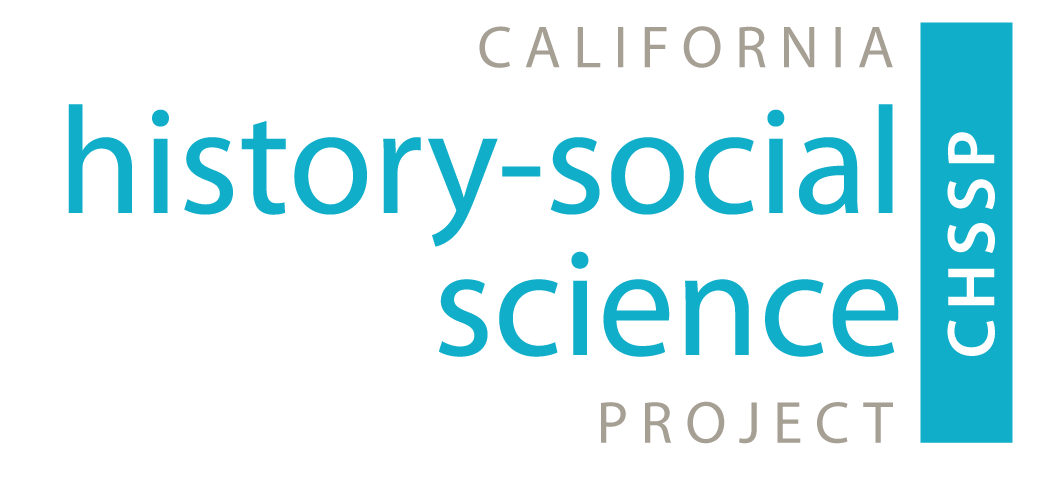Monthly Highlights – October 2022
Civic engagement is more than just volunteering at the ballots. It encompasses a wide variety of activities that support reciprocity, community, and perseverance. Grounding students' actions to these values allows them to think creatively and expansively about what engagement looks like to them.
This month’s classroom resources support civic engagement in the TK-12 classroom with Inquiry Sets for young learners developing an understanding about community as well as real-life examples of change-makers in their communities. If you are interested in implementing the California State Seal of Civic Engagement, take a look at this brief write-up on the report released by Leveraging Equity and Access in a Democratic Education (LEADE). The reports' findings prioritized student voice, infrastructure, and accessibility and equity.
Teacher Spotlight
October Educator Feature: Kate Bowen
Ready-to-Use Resources
- Symbols of the US - Grade 1
- HSS Standard 1.3 Students know and understand the symbols, icons, and traditions of the United States that provide continuity and a sense of community across time.
- This resource collection can be used with first graders to help them understand national identity. The packet contains images from the Library of Congress with detailed explanations of their significance. Ideally, it can serve as a starting point for other class projects.
- Government Institutions - Grade 2
- HSS Standard 2.3: Students explain governmental institutions and practices in the United States and other countries.1. Explain how the United States and other countries make laws, carryout laws, determine whether laws have been violated, and punish wrongdoers.2. Describe the ways in which groups and nations interact with one another to try to resolve problems in such areas as trade, cultural contacts, treaties, diplomacy, and military force
- This inquiry set asks, “How does my government work?” in order to help students conceptualize their relationship with the government as potential voters and familiarize students with how the government works using age-appropriate case studies.
- Local Government: Bike Lanes - Grade 4
- HSS Standard 4.5 Students understand the structures, functions, and powers of the local, state, and federal governments as described in the U.S. Constitution. 4.5.4 Explain the structures and functions of state governments, including the roles and responsibilities of elected officials 4.5.5 Describe the components of California’s governance structure (e.g., cities and towns, Indian rancherias and reservations, counties, school districts).
- Help your fourth graders understand how local government works with recent and relatable historical content. This inquiry set uses a case study of bike lanes in the city of Davis, CA, to guide students through how local government works. Students are asked to evaluate local decision-making and to determine how decisions have changed over time.
-
Current Context: Designed for older students, each Current Context report includes a background reading, a primary source activity & links to useful resources.
- California’s Recall Election: Although the California Recall election was last year, you can use our recent Current Context to help students become more media literate and to reflect on the benefits/drawbacks of direct democracy.
- Youth v. Climate Change: Juliana v. United States began in 2015 when twenty-one youth, ranging in ages from eight to nineteen, sued the federal government for its role in contributing to climate change.This Current Context Outlines the Juliana case while also examining environmental legislation and civic engagement during the 1960s and ‘70s –a period of time when citizen action and legislation successfully addressed several pressing environmental issues. Excerpted prima-ry sources from this era, as well as from the Juliana v. United Statescase, offer readers an opportunity to con-sider the role that the three government branches and citizens all play in ensuring a livable environment
- Youth in Action: As members of a demographic in which not all are old enough to vote, students bring a distinct voice to the national debates regarding matters of safety, equality, immigration, health, the environment, and more.
Picture Books (#KatesBookClub)
I Voted: Making a Choice Makes a Difference by Mark Shulman
- This book explains the concept of choosing: individually and as a group; making simple choices and navigating complicated decisions. I Voted contains many age-appropriate examples (e.g. playground issues!) that make this title terrific for primary grades.
I Am An American: The Wong Kim Ark Story by Martha Brockenbrough with Grace Lin
- I am an American is a great book to introduce the 14th Amendment, American citizenship, and the Supreme Court. The book highlights topics in California history, immigration, and citizenship.
Justice Is...A Guide for Young Truth Seekers by Preet Bharara.
- Brand new and so good! A book to use with elementary students focusing on the Judicial Branch. Students definitely understand the concept of fairness and right and wrong. This book highlights specific court cases in history as reinforcement.
Together We March: 25 Protest Movements That Marched Into History by Leah Henderson
- For generations, marches have been an invaluable tool for bringing about social change. People have used their voices, the words on their signs, and the strength in their numbers to combat inequality, oppression, and discrimination. They march to call attention to these wrongs and demand change and action, from a local to a global scale. Nice compilation of movements. Easily accessible for upper elementary and middle school students and would make a terrific class research project and/or presentation.
When You Look Out the Window: How Phyllis Lyon and Del Martin Built a Community by Gayle E. Pitman
- The story of Phyllis Lyon and Del Martin, one of San Francisco's most well-known and politically active lesbian couples. Describing the view from Phyllis and Del's window, this book shows how one couple's activism transformed their community and had ripple effects throughout the world. This book provides a FAIR Act opportunity and a great example of grassroots organization.

